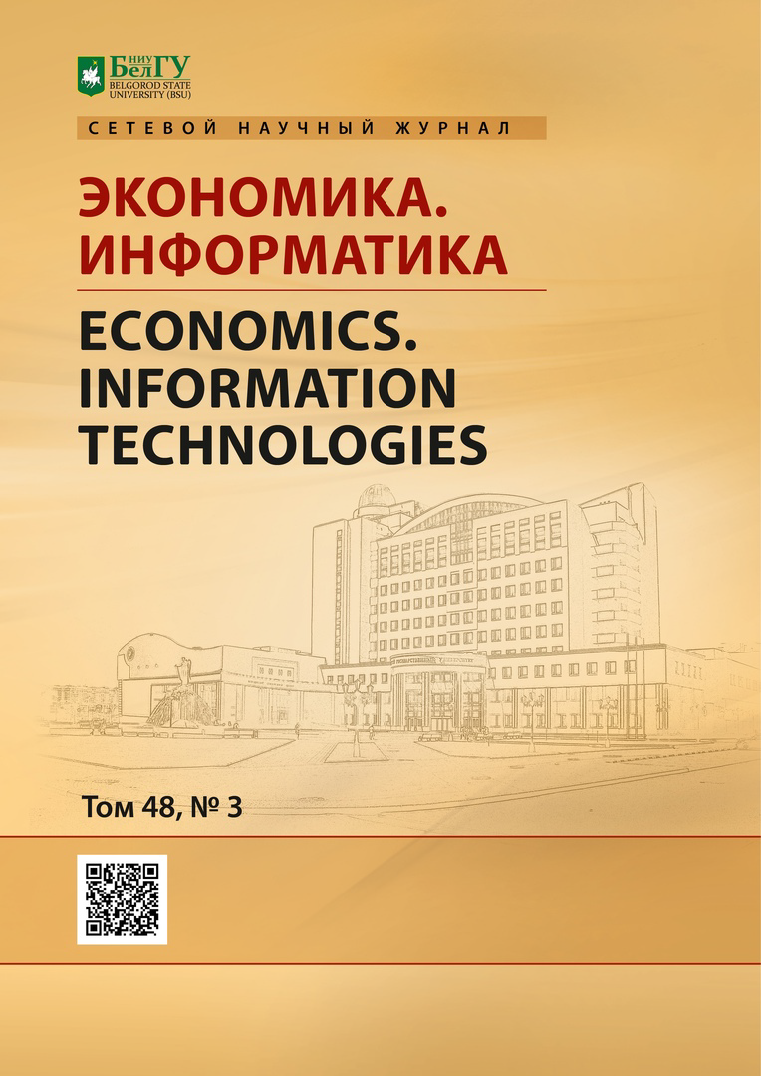Instruments for implementing cluster programs in OECD countries
DOI:
https://doi.org/10.52575/2687-0932-2021-48-3-426-433Keywords:
cluster software tools, cluster communications, cluster concept, regional economy, theoretical benefits of clustering, globalization, networksAbstract
The intensive development of industrial clusters around the world is due to broad opportunities for economic growth and positive multiplier effects. In international practice, the formation of a cluster strategy is considered as the most important component of innovation policy, demonstrating a balanced long-term approach of the state to the integrated development of territories. Comparing the best foreign experience, the authors identify and substantiate the key tools used in the clustering of territories. Despite the large number of publications on this topic, there are practically no studies on the system analysis of the tools used in the cluster programs of foreign countries. The purpose of the article is to highlight the various tools used in cluster programs in OECD countries. Categories of commonly used tools are considered, for attracting participants, providing collective services, and fostering collaborative research. The issues of program duration and funding are discussed. An analysis of the interaction and relationships between programs for the implementation of various types of clusters is carried out. As a result of the study, the main tools have been identified and analyzed, which allow the most effective implementation of programs for clustering territories that support regional specialization and development of clusters.
Downloads
References
Competitive Regional Clusters – OECD. 2008. URL: http://www.docme.ru/doc/1204601/ 283.competitive-regional-clusters-oecd (дата обращения: 05.07.2021).
DTI. 2004. Benchmarking UK productivity performance: The Government's response to the consultation on productivity indicators, 12 p.
Маршалл А. 1993. Принципы экономической науки. М., Издательская группа
«Прогресс», 23 c.
Сарафанова А.Н., Павлова А.С., Анастасова А.С. 2018. Институциональные формы развития территорий: технопарки и кластеры. OPEN INNOVATION: сб. ст. III Междунар. науч.-практ. конф. Пенза: МЦНС «Наука и просвещение»: 89–92.
Amin A., Cohendet P. 1999. Learning and Adaptation in Decentralised Business Networks, Environment and Planning D: Society and Space, 17: 87–104.
Andersson T., Napier G. 2004. The Venture Capital Market – Global Trends and Issues for Nordic Countries, Malmö.
Cortright J. 1994. Reinventing Economic Development: Ten Ideas for Market Driven Approaches to Promoting Industrial Competitiveness, Staff Report to the Joint Legislative Committee on Trade and Economic Development, October, 33 p.
Cortright J. 2006. Making sense of clusters: regional competitiveness and economic development. Washington, D.C.: Brookings Institution, Metropolitan Policy Program.
Drabenstott M. 2005. A review of the federal role in regional economic development, Report for the Center for the Study of Rural America, Federal Reserve Bank of Kansas City, May.
Garofoli G. 1984. Barriere all´innovazione e politiche d´intervento a livello regionale e sub-regionale, in Camagni, R., Cappellin, R. and Garofoli, G. (eds.), Cambiamento tecnologico e diffusione territoriale. Scenari regionali di risposta alla crisi, Franco Angeli, Milano.
Lall S. 1980. Developing Countries as Exporters of Technology and Capital Goods; the Indian Experience, mimeo, Oxford University Institute of Economics and Statistics, Oxford.
Lundmark M., Power D. 2003. Working through Knowledge Pools: Labour Market Dynamics, the Transference of Knowledge and Ideas, and Industrial Clusters. Urban Studies, 41: 5–6.
Pavitt K. 1998. Technologies, Products and Organization in the Innovating Firm: What Adam Smith Tells Us and Joseph Schumpeter Doesn’t. Industrial and Corporate Change, 7(3): 433–452.
Porter M.E. 2003. The economic performance of regions. Regional Studies, 37(6-7): 545–546.
Abstract views: 338
Share
Published
How to Cite
Issue
Section
Copyright (c) 2021 ECONOMICS. INFORMATION TECHNOLOGIES

This work is licensed under a Creative Commons Attribution 4.0 International License.


